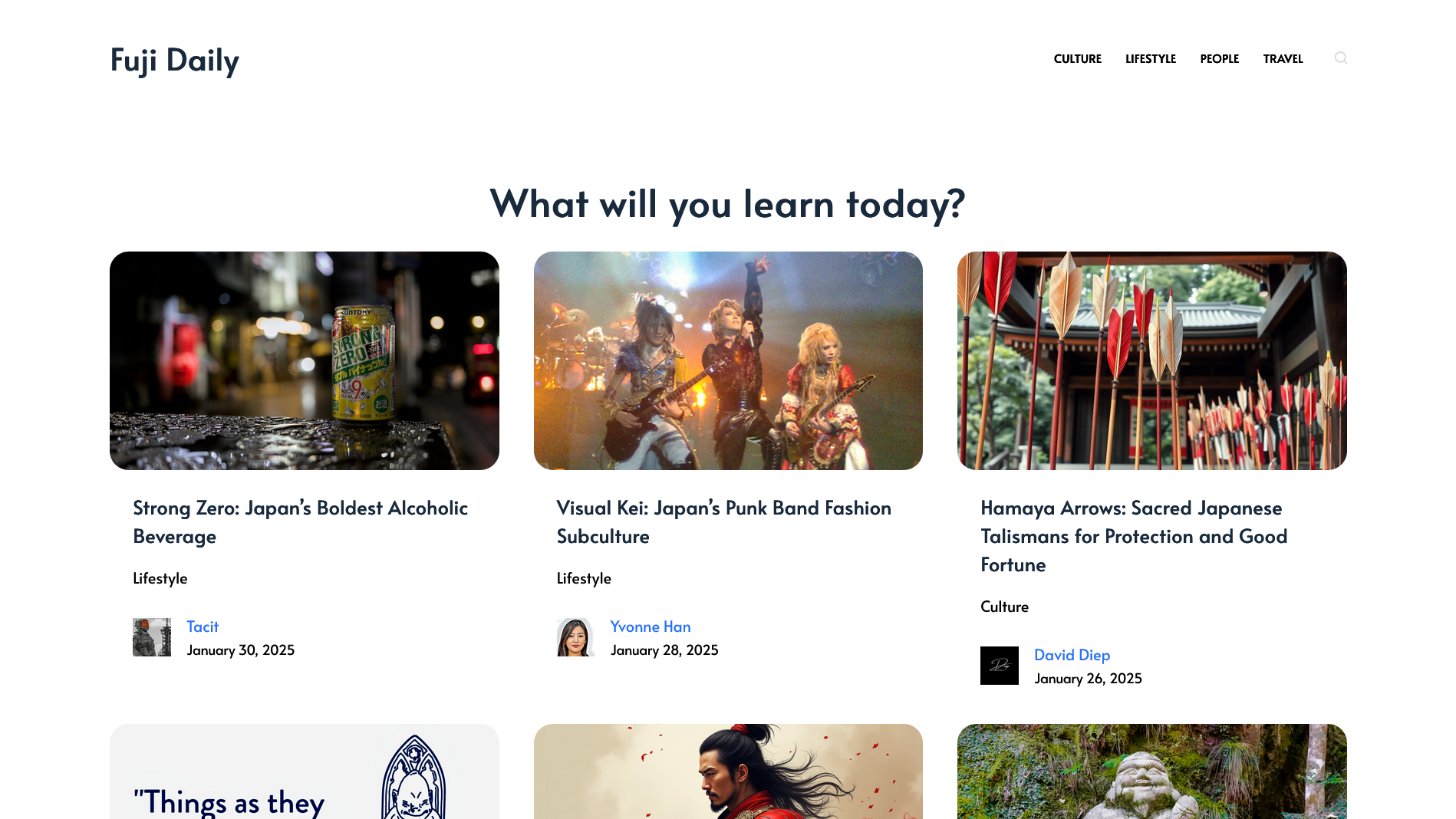
Fuji Daily is a Japan-based web publication dedicated to teaching you every aspect of Japan that most of the stereotypes don’t cover.
Being backed by academics and professionals from the publishing industry, they have access to consultants and area specialists to give you information that might not be easy to find elsewhere.
What they needed
Because their main intention is to promote Japan first, it was important to them that the main server be located in Japan. That was no problem, but most of their clients and visitors were USA-based so it would require a network that can accelerate the loading speeds despite the distance.
On top of the main blog content, Fuji Daily intends to slowly but surely become your one-stop-shop for Japan-related information so they required a provider that could handle e-commerce, high traffic blog content, self-hosted podcasts and possibly paid membership tools in the future. Most large WordPress websites do one to 2 of those at a high level if the customer is willing to pay. Most cannot handle this many complex requests from across the world on a single Japan-based server while still being fast to load in the USA.
What we did
Unlike most of our clients, Fuji Daily’s server location choice was not picked for optimal speed, it was picked to support the Japanese economy. In order to make the website fast for American and European visitors, we set their site up on a CDN with over 50 PoPs in North America and Europe, their 2 largest demographics, and set up an aggressive caching policy to keep the website fast-loading for 1 or 20,000 visitors per second with ads despite being located on the other site of the world.
Upcoming expansion
Though they wish to wait until Fuji Daily grows into a bigger brand before releasing new tools and features, they did plan to set up a podcast network for their influencer friends in Japan and eventually set up multilingual content. The latter of which is ready to deploy once they have translators on board.
Another thing they also wanted to do was to eventually set up free tools and distribute free software using Japanese servers. Those have been discussed and will be deployed as their brand grows.